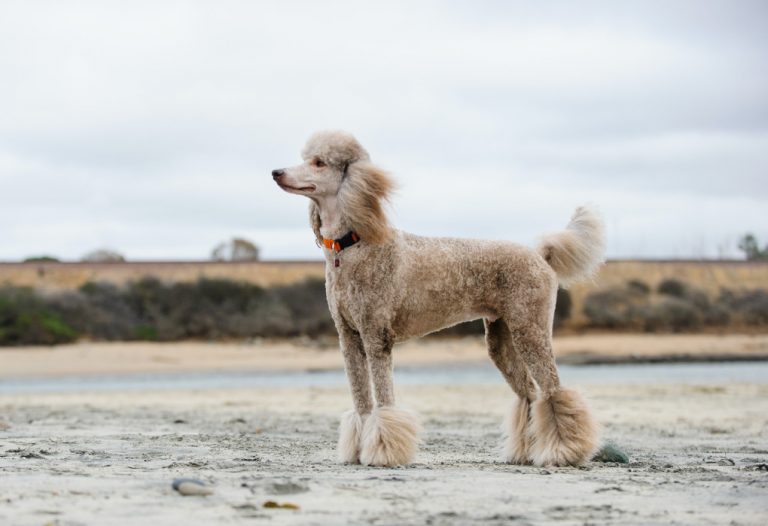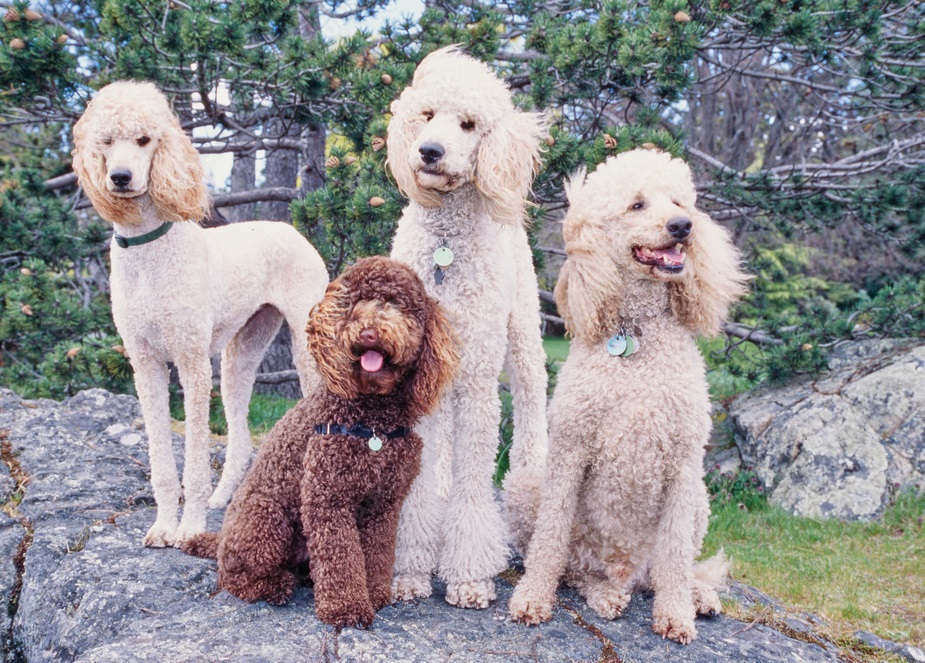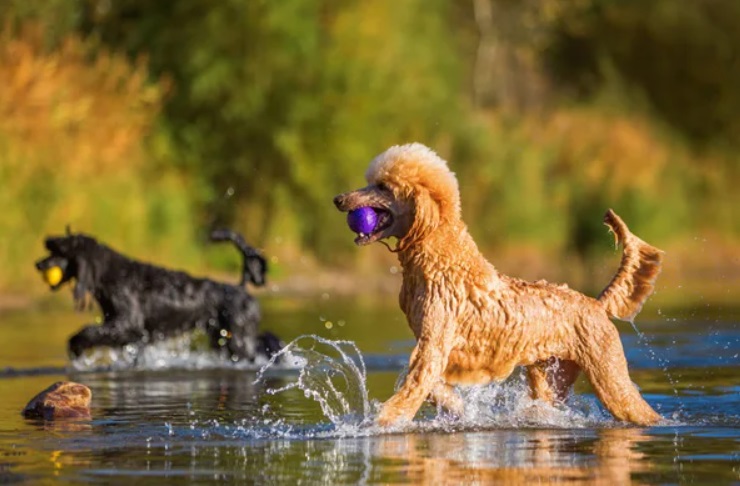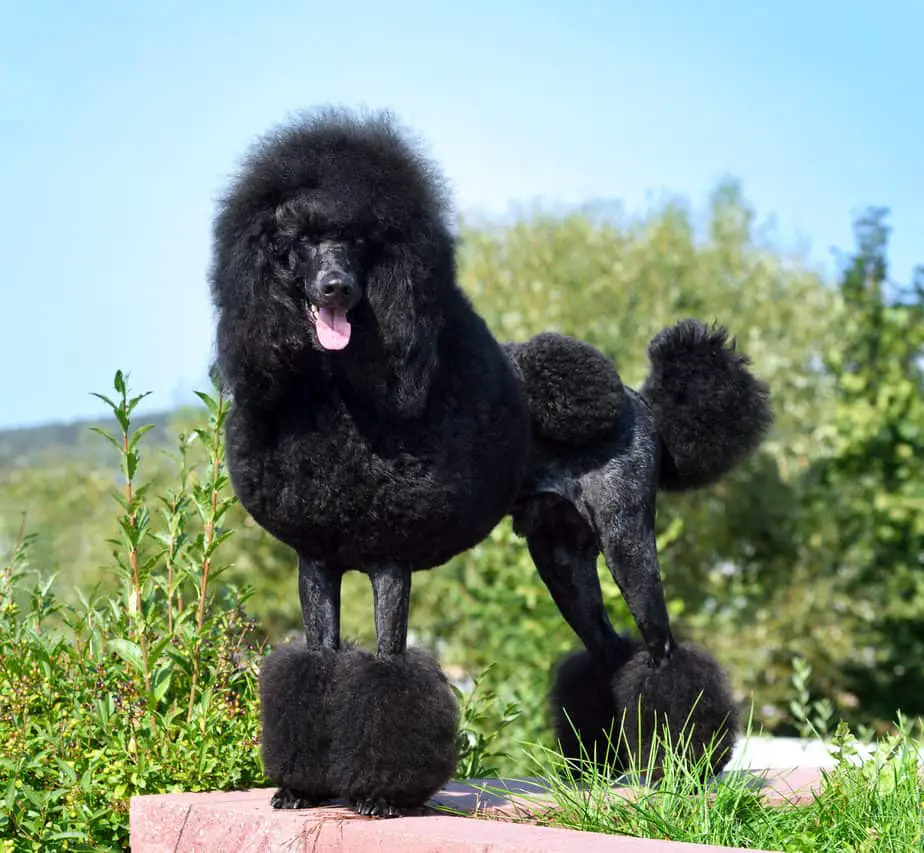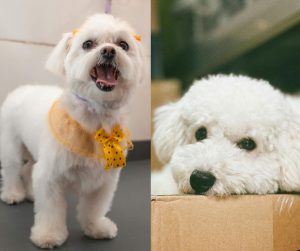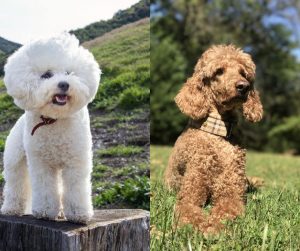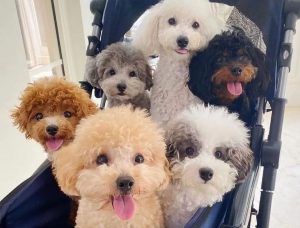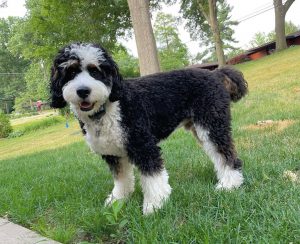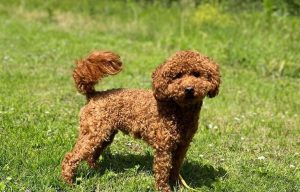Poodles are among the most instantly-recognizable dog breeds. They are famous for their stylish looks and intelligence. What if I told you that the iconic Poodle look was once more for functionality than for appearance and fashion points? The Poodle has so many talents besides looking pretty. Do you want to know what were Poodles bred for? Let’s take a look at this iconic breed.
Is It A French Or German Dog?
Many people think Poodles are French dogs. They are the national dog of France, after all. But the reality is that the Poodle originated in Germany. The name of the dog breed comes from the word “pudel” or “pudelin”, which translates to “to splash in the water”.
In France, the dog is known as Caniche, which is the French word for “duck dog”. Originating in Germany, the Poodle has changed its original purpose nowadays.
Breed Overview
The regal Poodle is a true aristocrat in the canine world. Whenever you see the dog breed, you see a puppy showing pride and confidence. But beneath the curly and hypoallergenic coat, there is an elegant athlete.
Famous for their intelligence, Poodles are always on the top of the smartest dog breeds. Nowadays, Poodles are among the most popular dogs in the United States according to The American Kennel Club.
They come in three sizes, a Standard Poodle, a Miniature Poodle, and a Toy Poodle. No matter the size, they all have the same personality traits and abilities. The difference is only in size. Appearance remains the same, with an elegant neck and straight back.
The Standard Poodle is the oldest among the different varieties. The Standard version has retained many of the working traditions and personality traits of a water retriever. The Toy Poodles and Miniature Poodles nowadays are more show dogs than working dogs.
History of the Poodle
Cynologists around the world agree that Poodles originated in Germany in the Middle Ages. They were born from a dog similar to the standard variety of the dog breed. The Poodle was the water dog of Germany, in the same way, that England had the English Water Spaniel and Ireland had the Irish Water Spaniel.
The name comes from the German word Pudel, meaning “to splash”. Many works by German artists from the 17th century depict a dog that looks fairly similar to the modern version.
Ancestors of the breed were used by waterfowlers to retrieve shot game and to recover lost arrows and bolts that missed the mark.
The standard variety is the oldest one. The Toy Poodle was created at the beginning of the 20th century when breeders wanted to downsize the Miniature Poodle and create a popular companion dog.
In the beginning, the efforts resulted in misshapen puppies. But as new breeding practices were adopted, the Toy variety became a replica of the original, only in a smaller size. We have to note, the Toy variety is not a Poodle mix. It is just a small-size replica of the Standard poodle.
Some kennel clubs, like the United Kennel Club, also recognize the Medium Poodle, a version in between the Miniature and Standard Poodle.
Speaking of the UKC, it recognized the Poodle as early as 1874. The American Kennel Club took longer, recognizing the breed in 1886.
What Were Poodles Bred For?
Now that we talked about the history of the breed, let’s talk about what were poodles bred for. If you look at different breeds, they all had a purpose. For example, terriers began as ratters, Dachshunds as dogs hunting badgers, and Pointers stood sentry at a crucial point on a hunting trail.
Germans created the Poodle because they needed a pup that can retrieve prey from the water. Poodle was the German version of a water dog.
The Practical Reason For The Poodle Cut
When you look at the history of the Poodle, you can easily understand the Poodle Cut. These days, the hairstyle is associated with dog shows.
But back in the day, that look had a practical reason behind it. They have naturally curly and wooly coats. While they are hypoallergenic, they retain lots of water while swimming. And that was not ideal for hunters looking to retrieve prey quickly and move on to the next target.
So, they found ways of increasing the efficiency of their dogs by protecting the dog from water temperature. So, the Poodle cut was designed to protect vital parts like brain, chest, hips, and knee joints.
It freed up Poodles to move quickly through the water while ensuring they didn’t suffer from any environmental factors.
The Many Jobs of Poodles
Throughout history, Poodles have filled different job roles. For example, in the 17th century, they were used as a working dog in the military. This gun dog was comfortable on the battlefield and could be trained to ignore gunfire.
There are many war stories, ranging from people like Napoleon and Prince Rupert involving Poodles.
Here is another interesting fact. In the 19th century, Poodles were used as circus performers. Initially bred for duck retrieving, they were left without a job in the 19th century. Waterfowl went out of favor, leaving Poodles unemployed.
But because of their intelligence, they quickly found a new job. They were natural circus performers. These athletic dogs remain one of the best circus dog breeds in history.
The Poodle breed nowadays can fill many other roles. For example, a service dog, a therapy dog, even a guard dog.
What About Poodle Mixes?
As we saw before, Poodles were bred to retrieve game from the water. Does that apply to their varieties? Well, no. In the last several years, Poodles have experienced some sort of renaissance.
They are now used more for creating designer breeds than anything else.
Everything began with the Labradoodle and Goldendoodle, and from there, breeders took off.
Nowadays, they crossbreed Poodles with almost any breed trying to create a new breed that has other personality traits but retains the hypoallergenic coat.

